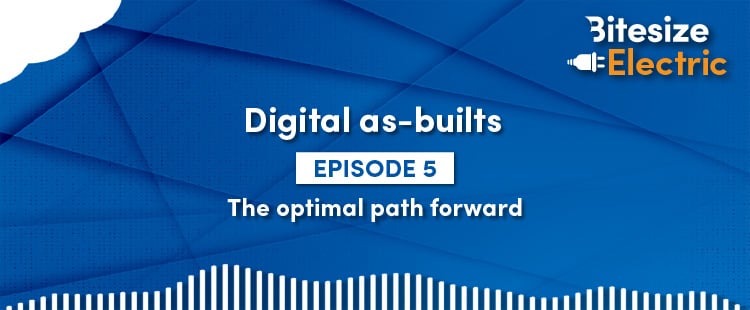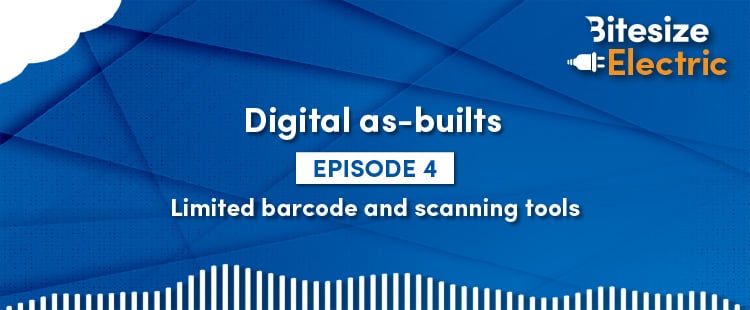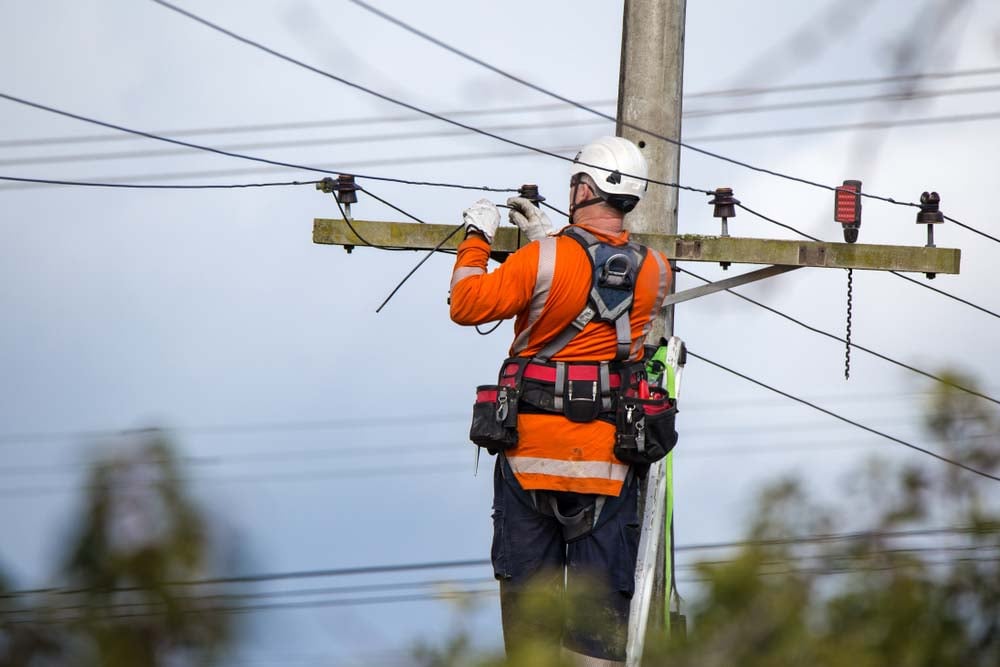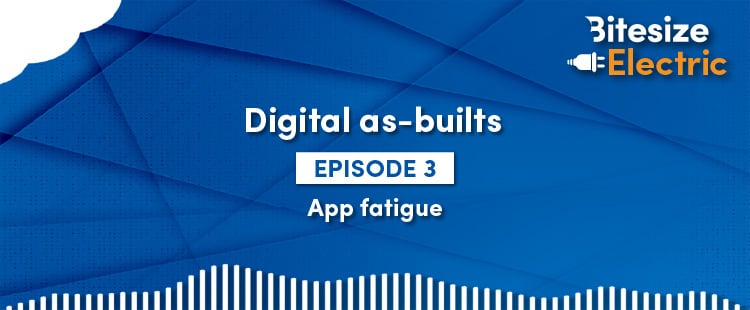Bitesize Electric - Digital as-built | Episode 4: Barcode and scanning tools
Welcome to Bitesize Electric, the podcast where we break down the biggest challenges and best practices shaping the future of electric networks, one bite at a time.
In this fourth episode, Brandon Curkan, Customer Success Manager is joined by Matt Roberts, Utilities Director, to explore at how field teams can benefit from efficient barcode scanning along with some of the challenges they face.
Let’s dive in…
Bitesize Electric: Digital as-built | Episode 4 transcript
Brandon Curkan:
Hello and welcome to Bitesize Electric, the podcast where we break down the biggest challenges and best practices shaping the future of electric networks, one bite at a time. I'm your host, Brandon Curkan, and we are working through a five-part series on digital as-builts. My guest for this series is Matt Roberts, Director of Utility Solutions for IQGeo.
In this series, we'll explore the challenges that utilities face during as-built workflows, the impact of these challenges pose to utilities, and what these utilities can do to improve their as-built workflows.

|

|
|
Brandon Curkan Customer Success Manager, IQGeo |
Matt Roberts Director of Utility Solutions, IQGeo |
Brandon Curkan:
We're on part four of our five part series on digital as-built capture. Today we'll talk about barcode and scanning tools for field teams performing as-builts. We'll discuss how equipping teams these tools can accelerate and improve their work, and the challenges of getting these tools into the hands of field teams. I'm joined again by Matt Roberts, Director of Utility Solutions for IQGeo. Matt, ready talked about barcoding and scanning in the as-built process?
Matt Roberts:
Absolutely.
Brandon Curkan:
All right. So let's start by discussing the overall use of barcoding and scanning tools in as-builts. Can you tell us how these tools should work in the field?
Matt Roberts:
Yeah, so first off I think we've got to thank the gas industry in the tracking and traceability standards that they've really pioneered to start with how this all began. So if we think about it, especially in the gas industry, but more and more in the electric, electric distribution, electric transmission. How it's working today is during the as-built process number of equipment, whether it's pipes, and a gas example, a lot of transformers, you see it now, but they all come with a barcode.
No different than what we see at the grocery store. And oftentimes those construction crews will have either the on board camera that is a barcode scanner of their device, or you'll see physical, ruggedized barcode scanners. And what they're doing is, when they put that asset in its constructed location, they're taking a scan of the barcode on that asset. And what's happening in the background is, there's really kind of a call back to a database to where it matches the barcode ID with what's inside the database, and it returns a whole bunch of attributes, manufacturer, date of manufacturing. For transformers a number of electric characteristics. And they are really freeing up the construction crew, and the office from manually typing dozens and dozens of attributes that go on top of that feature that was constructed.
Brandon Curkan:
Awesome. Yeah. I actually really love the grocery store analogy to this, being able to kind of see that as a parallel there makes a lot of sense from my perspective. Just kind of following along on that analogy, you mentioned that these barcodes on these assets, they relate back to a lot of these attributes that you no longer have to manually enter. Is that the same for every utility, just like at a grocery store, you know, one item has a UPC that everybody reads, is that the same across utilities or is there a standardized way of viewing these assets?
Matt Roberts:
So, Brandon, I'm sure that utility execs are all screaming: "Yes, I wish there was some common thing that we all used in a standard". While there are standards, there is still not that, I'll keep with your grocery store analogy, the apple that's got the PLU that's one, two, three, and it's good at this grocery store, and that grocery store, still doesn't necessarily exist at each of these utilities. Especially on electric, on gas you see more and more standardization to where this is the barcode standard in which all manufacturers, and thus the as-built tools are built off of.
But when it comes to electric utilities, what I've seen is homegrown barcode databases to where it's managed entirely by the utility itself. There are skate barcode standards, that's an IEEE standard that is actively being worked on really targeting distribution transformers. So there's certainly progress being made in terms of standardization, but I certainly could not say that each and every utility is using the same barcodes that anybody could go and scan and all get the same results.
Brandon Curkan:
Got it. Okay. So barcodes are there, but they're not necessarily standardized, but they exist. So that's good. It's a good start. So what other blockers are there then to having these barcode scanners as part of the normal as-built process? Is it just getting these pieces of equipment out into the field, or is it the software that actually uses and reads those attributes?
Matt Roberts:
So it's yes on the software side, but the biggest hangup would be, call it the barcodes themselves. So let's say if you're a utility going out and wanting to do barcodes on all your pole top transformers. It's very easy to put barcodes on the transformers that are in the yard today, that haven't got on top of a pole. It's very difficult to convince somebody that we need to run a bucket truck. For what? Oh, we need to put a sticker on a barcode because XYZ is going to be made easier.
The biggest holdup is really all that aging infrastructure. The unscanned, unbarcoded equipment that's underground, sitting on poles, that the utility simply couldn't go out and inventory. Which actually brings up an interesting new development, that I'm talking with utilities more and more about. Which is, what about using AI rather than the barcode itself? What if I could poke my camera up at that transformer and have its faceplate get all of the characteristics from that? Have the AI trained to pick up the connections, think about transformer bank. Be able to take a photo, look at the transformer and see that it's subtractive or additive solely based off of looking at it and its characteristics.
Brandon Curkan:
Yeah, that's a great idea. AI photo recognition is a very interesting way to get around the barcode issue. That's hopefully something we see more of in the future, especially with the rise now of AI being so prevalent everywhere. That's great stuff Matt, thank you very much, and thanks for your time, and I guess we'll see you again in part five.
Coming up next: Episode 5 - The optimal path forward
Tune in to the final episode of the Bitesize Electric digital as-built series, host Brandon Curkan, will discuss how the digital as-built workflow can evolve and help field teams become more efficient than ever.

Digital as-built capture best practice guide
If you’re struggling with an as-built backlog at your utility, download our best practice guide that outlines the processes that IQGeo has developed in partnership with major utilities to streamline the as-built process.
Similar articles:










